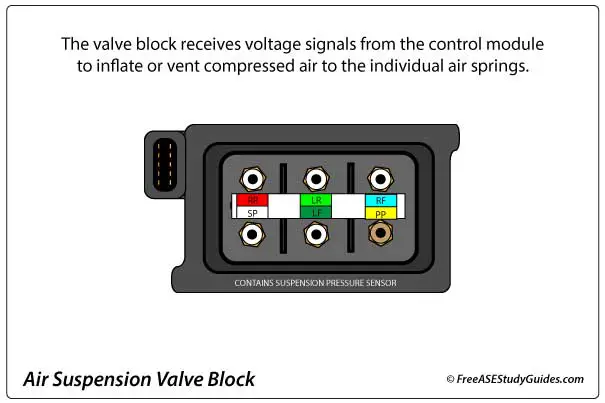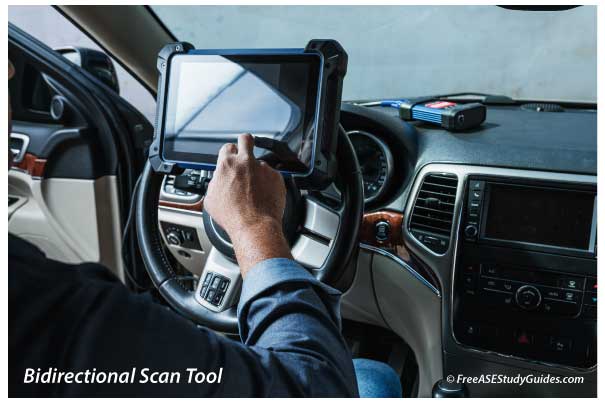Air Spring Suspension Solenoids

Air spring suspension systems provide a better ride and more stability than conventional coil springs. However, they contain more components and are typically more expensive to repair. The control module receives information from the CAN bus and ride height sensors. Then, it operates the compressor and several valves to inflate and deflate the springs to maintain comfort and ride height.
Solenoids

Many of today's air suspension systems integrate electric air valves or solenoids in a valve block. Other systems mount them on the individual air springs. The pressure release or vent valve is responsible for venting air into the atmosphere. It is near the compressor with the drier. The drier keeps the system free of harmful moisture.
Ride Height Sensors

Airbag suspensions contain a height sensor that signals the ECM of the vehicle's actual curb/ride height. The sensor typically has a linkage arm attached to a control arm or axle housing. As the body moves up and down, the sensor informs the control module of this movement. The module will inflate or deflate the springs to maintain the desired ride height.
Controller Area Network

Older air spring suspension systems are less complex than modern systems. Today's air suspension systems have an electronic control module that receives information about operating conditions, such as vehicle speed, from the CAN bus for efficient and precise control of the compressor, the solenoid valve block, and the vent valves.

Modern systems lower the vehicle to improve aerodynamics as speed increases. The ECM monitors the shared speed sensor signal over the network and lowers and raises the vehicle ride height as speed changes.
Air Suspension Diagnosis

Electical problems like shorts and open circuits occur, and compressors wear out and fail. The compressor will run over time if there is a leak in the system or in one of the springs. In time, this can clog the valve with small particles from the overworked compressor, causing it to stick. This problem results in a sagging spring in one or more corners. If the compressor is not working, check the fuse, the relay, and the circuit's connector for power and ground.

The control module inflates the springs to trim and maintain ride height from extra passenger and cargo weight. A rusty or sticking vent/exhaust valve on the compressor will prevent the air springs from deflating and reducing ride height after removing the weight. The vehicle will not lower once raised. Check this pressure release valve by activating it with a bidirectional scan tool if the springs do not deflate.